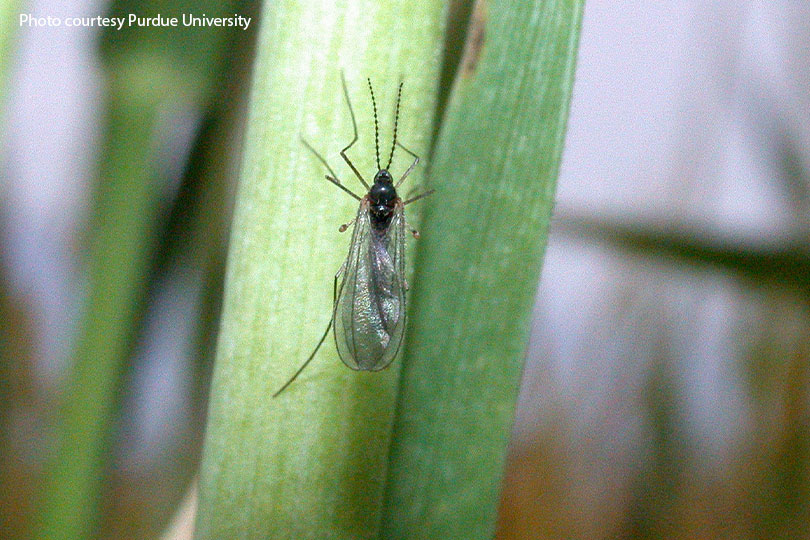By Shelby Shank
Field Editor
Hessian fly infestations are a concern for many wheat farmers.
“The worst part about the Hessian fly is you don’t realize it’s in your crop until it’s too late,” Rodney Schmalriede, a wheat farmer near McGregor, said. “They come in, lay their eggs and then the larvae eats on the inside of the stem of the wheat. If they get in there bad enough, it can be a complete loss of the crop.”
Warmer winters allow the Hessian fly to grow and spread through crops, wiping out an entire field.
The small fly can severely damage wheat and other small grain crops, like barley and rye, during its larval state. The cigar-shaped larvae have a creamy white body with a green streak down the middle of its back. The larvae then forms a puparium ranging in color from dark brown to black, resembling flaxseed.
Once fields are infested, there’s not much that can be done.
“I’ve probably experienced it 10 different times in my years of farming,” Schmalriede said. “But maybe two or three times it was bad enough to where we knew we had been hit, and it caused some financial loss.”
Farmers won’t know if their wheat was impacted by the Hessian fly until springtime when the crop is ready for harvest.
Currently, there is no way to manage the pest once it is known to be in the field.
“It’s really frustrating because it’s too late to do anything by the time you really notice the damage. There has been some work using pyrethroids,” he said. “If you can catch them just at the right time, you can lessen the damage, but it doesn’t take care of the fly completely.”
Staying proactive is key in pest management decisions. Farmers can work alongside county Extension agents and local farmers to mitigate Hessian fly infestations.
There are certain wheat varieties that are less susceptible to the Hessian fly and can withstand feeding and yield loss, according to AgriLife Extension Integrated Pest Management Specialist David Drake.
He recommends farmers delay planting until late-October or November to avoid flies depositing eggs. Fly eggs are deposited near the base of plants between September and December, depending on temperatures. Pupae emerge three to 10 days later, moving between the leaf sheath and stem to set up feeding sites in the crown of the plant.
Crop rotation in fields and nearby fields is necessary to mitigate Hessian fly infestations, Drake said. Cropping wheat to wheat in the same fields should be avoided, and farmers should consider the stage of progress and soil moisture conditions.


Leave A Comment